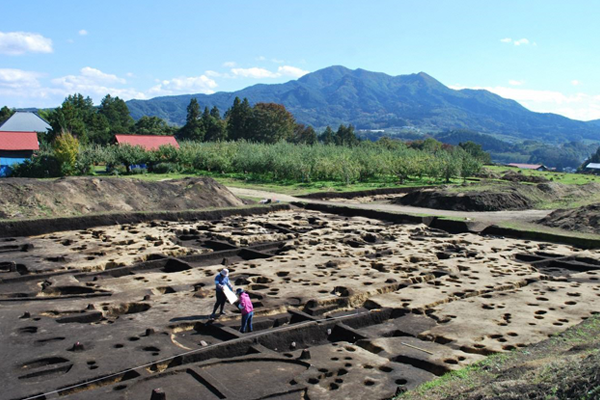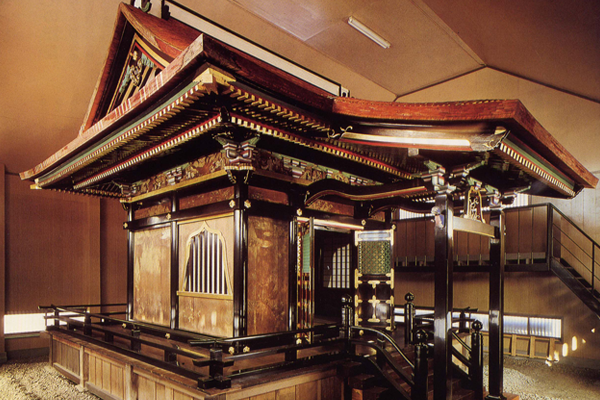The Nanbu Clan was originally formed in the province of Kai (present-day Yamanashi). The clan was active as immediate vassals to the Kamakura Bakufu and moved to the northern area of Tohoku during the Nanboku-chō period. When the clan arrived in the untamed wilderness of northern Tohoku, they first settled in what is now the small town of Nanbu.
For years the area around the town of Nanbu was the center of the clan’s activity in the north. Today, two great sites that are rich in the clan’s history can be found in the town of Nanbu. These two sites are just waiting to be explored for anyone ready to discover the history of the Nanbu domain.
The Shojujidate Castle Site
During the warring states period of Japan, around 500 years ago, the Nanbu area was ruled over by the Sannohe Nanbu branch of the Nanbu Clan. The clan resided in a castle that was more akin to a fortified residence than a traditional Japanese castle. It was called the Shojujidate Castle.
The building remains measure at 36 meters from north to south, and 42 meters east to west, making it the biggest in the Tohoku area. On the castle’s eastern side was the Oshu highway, to the south the Kazuno Road, and just further south than that was the Mabechi river. All of these were major thoroughfares and allowed the castles access to major land and water routes, a key advantage for the structure.
The Shojujidate Castle was burned down in 1539, and high-quality pottery from this period has been excavated from the castle site. After the castle burned down, the clan moved the site of their next castle further inland to the area that is now the Shiroyama Park in Sannohe. During the reign of Hideyoshi Toyotomi, the clan moved to Fukuoka castle in Ninohe city, until finally moving to Morioka city during the Edo period, where they built the Morioka castle.
The Mausoleum of Toshiyasu Nanbu
Toshiyasu Nanbu was the fourth son of the 27th lord of the Nanbu clan. He was born in the Sannohe Castle in 1608, and in 1626 he was made lord of the Asamizu Castle in the current town of Gonohe. Toshiyasu resided at the Sannohe Castle where he was left to govern over administrative affairs when his father was gone. But then in 1631 he fell sick and passed away at the young age of 24.
The mausoleum built for Toshiyasu is the only one of its kind in the whole of the Nanbu clan history and is decorated with extravagant materials like gold and lacquering ornamentations. It is of significant historical value as it exemplifies the area’s use of the Momoyama architectural style, as well as for its aesthetic beauty. The wall paintings of the mausoleum are thought to be in the style of the Kano school of the early Edo period. It was designated a national important cultural property in 1953.


The Shojujidate Castle site
& The Mausoleum of Toshiyasu Nanbu
- Access Point:
- Address: Shojuju81-2 Komukai Nambu, Sannohe District, Aomori
(The Shoujujidate Site Information Center) - Tel:
- 0179-23-4711
- Hours:
- The Shojujidate Castle site 9:00~16:30
The Mausoleum of Toshiyasu Nanbu 9:00~16:00 - Closed:
- Dec 29 ~ Jan 3
- Access:
- 7 min by car from Sannohe Station
- Parking:
- Available
